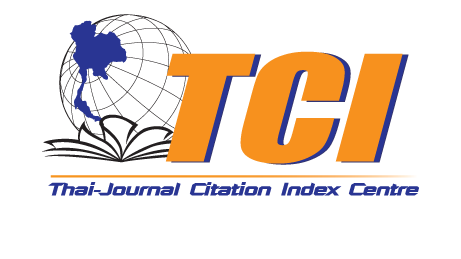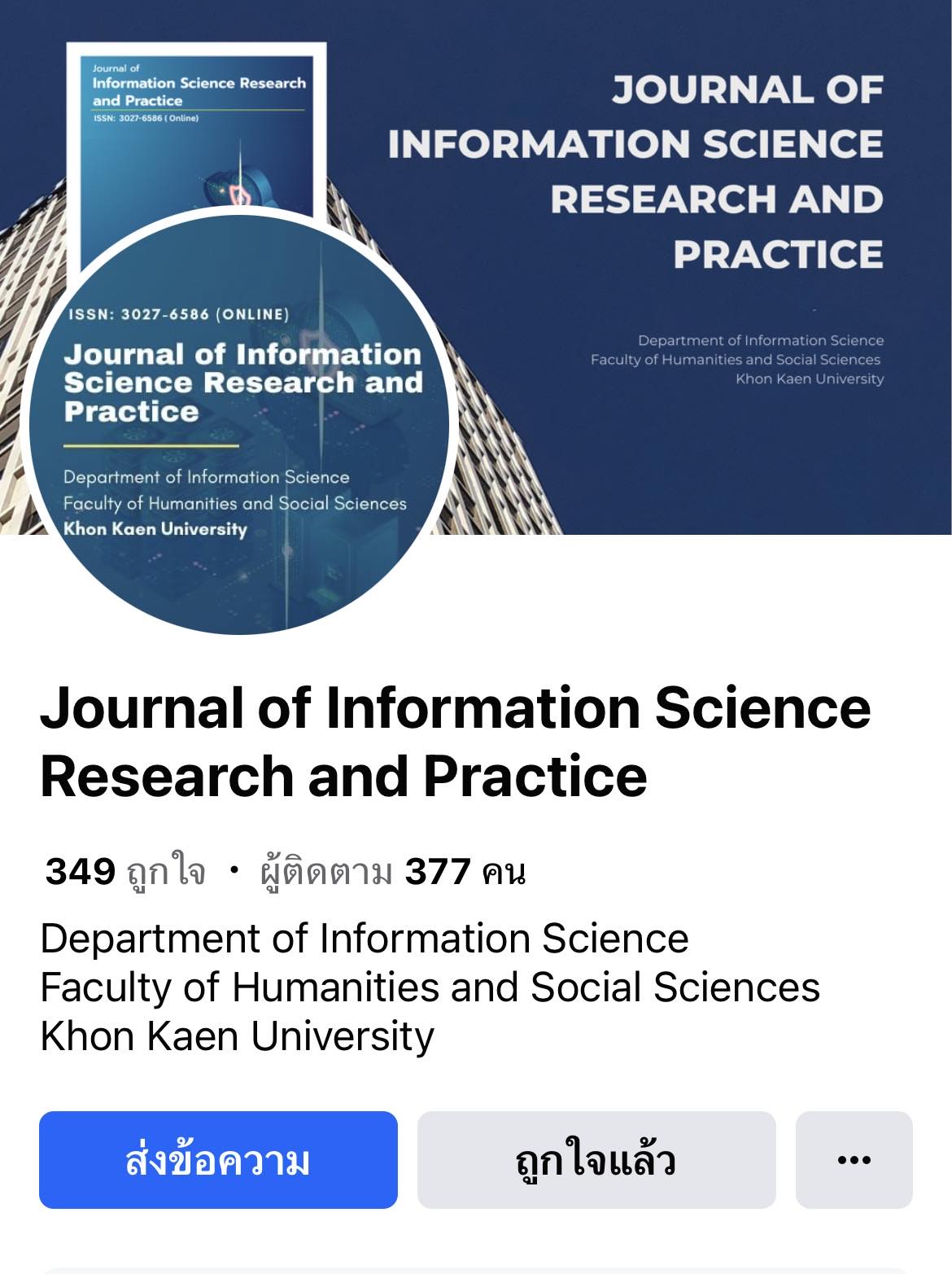A Content Analysis of Edible Insects in Online Media
DOI:
https://doi.org/10.14456/jiskku.2024.32Keywords:
Content analysis, Information disorder, Fake news, Future food, Edible insect, Entomophagy, Alternative protein, Food security, Cricket, Grasshopper, Online mediaAbstract
Purpose: To study content related to edible insects and analyze information disorders in online media.
Methodology: A qualitative research method using content analysis was conducted. Data were collected from three online platforms—Facebook, YouTube, and TikTok—using keywords #crickets, #grasshopper, #futurefood, and #edibleinsects. The study covered posts published between May 1, 2021, and April 30, 2023. Analysis was carried out using frequency distribution tables alongside the concepts of edible insects and information disorders.
Findings: From 102 posts analyzed, the most common content was positive, focusing on marketing and business opportunities, predominantly published on YouTube by news agencies. This was followed by negative content about insect parasites. Most content pertained to the upstream edible insect industry. Information disorders appeared in nearly equal proportions as misinformation and disinformation. Highly engaged comments often featured satire, parody, slang, or nonverbal expressions to evade moderation. YouTube was the primary platform for disinformation, while Facebook generated the highest number of engaged comments.
Applications of this study: The findings can serve as a foundation for planning accurate communication about edible insects, addressing information disorders, and reflecting on the role of online news agencies in disseminating such information.
Downloads
References
Abdullahi, N., Igwe, E. C., Dandago, M. A., & Yunusa, A. K. (2021). Consumption of edible-insects: the challenges and the prospects. Food ScienTech Journal, 3(1), 1. https://doi.org/10.33512/fsj.v3i1.10468
Association for Progressive Communications. (2021). Disinformation and freedom of expression. Switzerland: Office of the United Nations High Commissioner for Human Rights.
Ayieko, I. A., Onyango, M., Ngadze, R. T., & Ayieko, M. A. (2021). Edible insects as new food frontier in the hospitality industry. Frontiers in Sustainable Food Systems, 5, 693990. https://doi.org/10.3389/fsufs.2021.693990
Bai, Y., Yao, Z., & Dou, Y.-F. (2015). Effect of social commerce factors on user purchase behavior: An empirical investigation from renren.com. International Journal of Information Management, 35(5), 538–550. https://doi.org/10.1016/j.ijinfomgt.2015.04.011
Baker, M. A., Shin, J. T., & Kim, Y. W. (2016). An exploration and investigation of edible insect consumption: The impacts of image and description on risk perceptions and purchase intent. Psychology & Marketing, 33(2), 94–112. https://doi.org/10.1002/mar.20847
Brunner, T. A., & Nuttavuthisit, K. (2019). A consumer-oriented segmentation study on edible insects in Switzerland and Thailand. British Food Journal, 122(2), 482–488. https://doi.org/10.1108/bfj-08-2018-0526
Dataxet. (2024). Thailand media landscape 2024. Retrieved from Thailand Media Landscape website: https://www.dataxet.co/media-landscape/2024-th
Dicke, M., Eilenberg J., Salles J.F., Jensen A.B., Lecocq A., Pijlman G.P., van Loon J.J.A. and van Oers M.M. (2020). Edible insects unlikely to contribute to transmission of coronavirus SARS-CoV-2. Journal of Insects as Food and Feed, 6(4), 333–339. https://doi.org/10.3920/jiff2020.0039
Domenico, G. D., Sit, J., Ishizaka, A., & Nunan, D. (2021). Fake news, social media and marketing: A systematic review. Journal of Business Research, 124(1), 329–341. https://doi.org/10.1016/j.jbusres.2020.11.037
Dougherty, D. S., Schraedley, M. A., Gist-Mackey, A. N., & Wickert, J. (2018). A Photovoice study of food (in)security, unemployment, and the discursive-material dialectic. Communication Monographs, 85(4), 443–466. https://doi.org/10.1080/03637751.2018.1500700
Duffus, N. E., Christie, C. R., & Morimoto, J. (2021). Insect cultural services: How insects have changed our lives and how can we do better for them. Insects, 12(5), 377. https://doi.org/10.3390/insects12050377
Food And Agriculture Organization Of The United Nations. (2013). Edible insects: Future prospects for food and feed security. Rome, Italy: Food And Agriculture Organization Of The United Nations, Beaconsfield, Quebec.
Halloran, A., Flore, R., Vantomme, P., & Roos, N. (Eds.). (2018). Edible insects in sustainable food systems. Cham: Springer International Publishing. https://doi.org/10.1007/978-3-319-74011-9
Jenkins, H. (2006). Convergence culture: Where old and new media collide. New York: New York University Press.
Junges, J. R., do Canto, N. R., & de Barcellos, M. D. (2021). Not as bad as i thought: Consumers’ positive attitudes toward innovative insect-based foods. Frontiers in Nutrition, 8, 631934. https://doi.org/10.3389/fnut.2021.631934
Kagan, N. (2014). How to create viral content: 10 insights from 100 million articles - Noah Kagan. Retrieved from https://noahkagan.com/why-content-goes-viral-what-analyzing-100-millions-articles-taught-us/?hvid=41eiUq
Kandel, N. (2020). Information disorder syndrome and its management. Journal of Nepal Medical Association, 58(224), 280–285. https://doi.org/10.31729/jnma.4968
Kauppi, S.-M., Pettersen, I. N., & Boks, C. (2019). Consumer acceptance of edible insects and design interventions as adoption strategy. International Journal of Food Design, 4(1), 39–62. https://doi.org/10.1386/ijfd.4.1.39_1
Kemp, S. (2024). Digital 2024: Thailand. Retrieved from https://datareportal.com/reports/digital-2024-thailand
Krippendorff, K. (2018). Content analysis: An introduction to its methodology (4th ed.). Los Angeles, Calif. Etc.: Sage.
Legendre, T. S., & Baker, M. A. (2021). The gateway bug to edible insect consumption: interactions between message framing, celebrity endorsement and online social support. International Journal of Contemporary Hospitality Management, 33(5), 1810–1829. https://doi.org/10.1108/ijchm-08-2020-0855
Looy, H., Dunkel, F. V., & Wood, J. R. (2013). How then shall we eat? Insect-eating attitudes and sustainable foodways. Agriculture and Human Values, 31(1), 131–141. https://doi.org/10.1007/s10460-013-9450-x
Marberg, A., van Kranenburg, H., & Korzilius, H. (2017). The big bug: The legitimation of the edible insect sector in the Netherlands. Food Policy, 71, 111–123. https://doi.org/10.1016/j.foodpol.2017.07.008
Muhammed , S. T., & Mathew, S. K. (2022). The disaster of misinformation: A review of research in social media. International Journal of Data Science and Analytics, 13(4), 271–285. https://doi.org/10.1007/s41060-022-00311-6
Nadeem, W., Andreini, D., Salo, J., & Laukkanen, T. (2015). Engaging consumers online through websites and social media: A gender study of Italian Generation Y clothing consumers. International Journal of Information Management, 35(4), 432–442. https://doi.org/10.1016/j.ijinfomgt.2015.04.008
Patchimnan, M., Phankaew, B., & Inson, C. (2022). Integrated marketing communication exposure, attitude, decision-making process and purchasing behavior. International Academy of Global Business and Trade, 18(4), 169–181. https://doi.org/10.20294/jgbt.2022.18.4.169
Ponce-Reyes, R. & Lessard B.D. (2021). Edible Insects - A roadmap for the strategic growth of an emerging Australian industry. Canberra: CSIRO.
Rodríguez-Fernándezr, L. (2019). Disinformation and organisational communication: A study of the impact of fake news. Revista Latina de Comunicación Social, 74, 1714–1728. https://doi.org/10.4185/rlcs-2019-1406en
Schraedley, M.K., Bean H., Dempsey S.E., Dutta M.J., Hunt K.P., ORCID Icon, Ivancic S.R., LeGreco M., Okamoto K. & Sellnow T. (2020). Food (in)security communication: a Journal of Applied Communication Research forum addressing current challenges and future possibilities. Journal of Applied Communication Research, 48(2), 166–185. https://doi.org/10.1080/00909882.2020.1735648
Sogari, G., Liu, A., & Li, J. (2019). Understanding edible insects as food in western and eastern societies. Environmental, Health, and Business Opportunities in the New Meat Alternatives Market, 166–181. https://doi.org/10.4018/978-1-5225-7350-0.ch009
Sotanasathien, S. (2012). Principles and theories of social science research. (In Thai). Bangkok. Rabieng-Thong Printing.
Stockholm Environment Institute. (2020). SEI Annual Report 2019. Stockholm: SEI.
Taddeo, G., de-Frutos-Torres, B., & Alvarado, M.-C. (2022). Creators and spectators facing online information disorder. Effects of digital content production on information skills. Comunicar, 30(72). https://doi.org/10.3916/c72-2022-01
Verneau, F., La Barbera, F., Kolle, S., Amato, M., Del Giudice, T., & Grunert, K. (2016). The effect of communication and implicit associations on consuming insects: An experiment in Denmark and Italy. Appetite, 106, 30–36. https://doi.org/10.1016/j.appet.2016.02.006
Yang, J., & Luttrell, R. (2022). Digital misinformation & disinformation: The global war of words. The Emerald Handbook of Computer-Mediated Communication and Social Media, 511–529. https://doi.org/10.1108/978-1-80071-597-420221030








